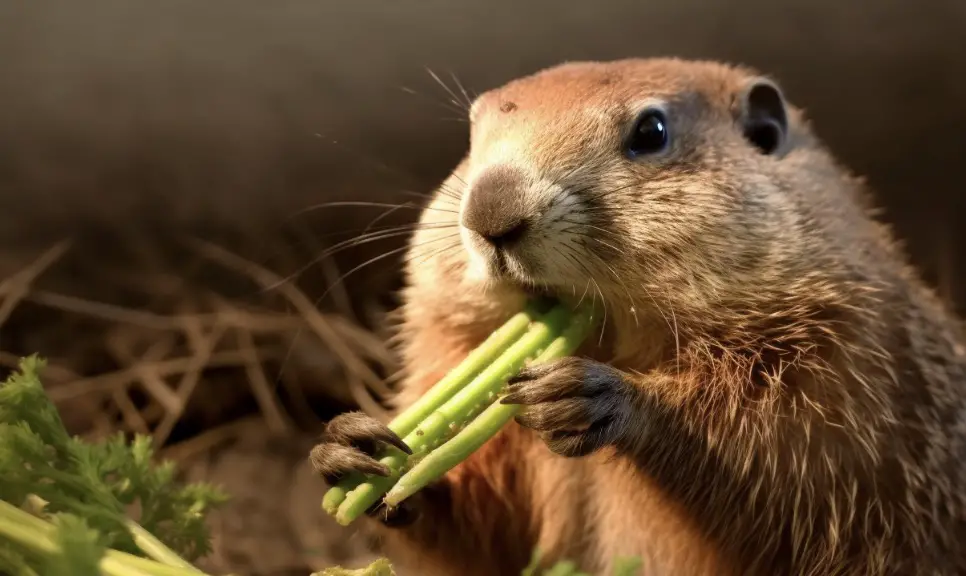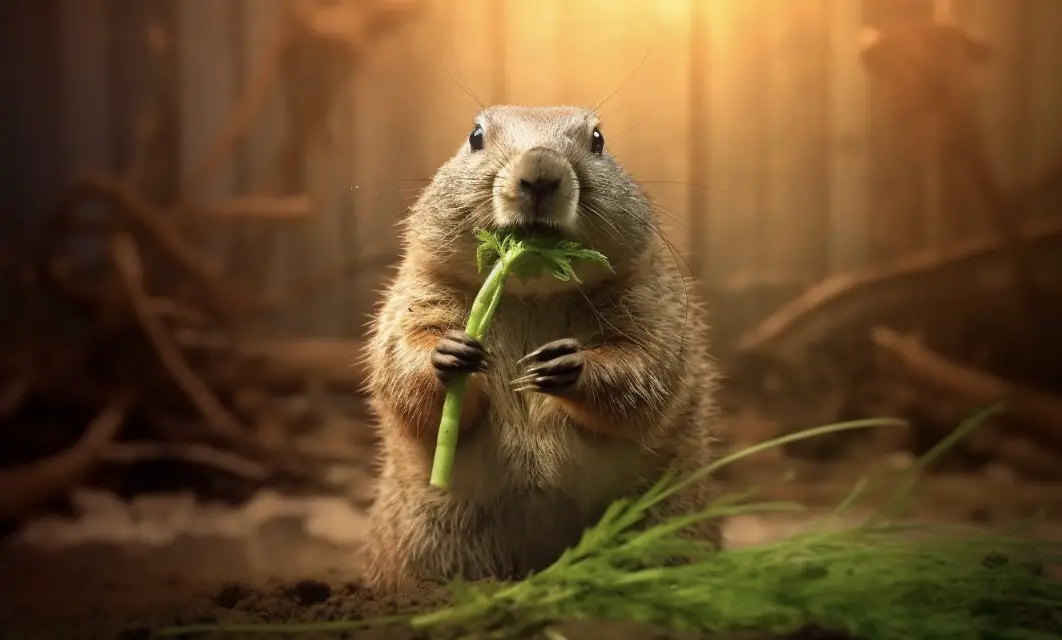As a biologist and avid gardener, I’ve often found myself at odds with the local wildlife. One question that has repeatedly crossed my mind is: do groundhogs eat asparagus?
The short answer is yes, groundhogs do eat asparagus. However, there’s much more to the story than just a simple yes or no. In this blog post, we’ll explore the groundhog’s diet, their impact on gardens, and effective ways to protect your asparagus crop.
The Groundhog Diet
Groundhogs, also known as woodchucks or whistle pigs, are primarily herbivores. They have a diverse diet that changes with the seasons. In spring and summer, they eat a variety of plants, including grasses, clover, and dandelions. As the weather turns colder, they may dig up and eat roots, tubers, and even tree bark.
Asparagus is just one of many plants that groundhogs enjoy. The tender shoots of asparagus are a tasty snack for these hungry animals, as are the leaves and stalks of other plants in your garden. Their voracious appetite can make them a major nuisance for gardeners and farmers alike.
Why Asparagus?
Asparagus is a perennial vegetable, meaning it comes back year after year. The young, tender shoots are the parts we eat, and they are rich in nutrients like vitamins A and C, as well as potassium, thiamin, and fiber.

This makes asparagus a highly desirable food source for groundhogs and other animals.
The fact that asparagus is a perennial also makes it a target for groundhogs. The roots of the asparagus plant can survive for up to 15 years, which means it’s a reliable food source for the animals. Once they find a patch of asparagus, they’re likely to return year after year.
Groundhogs in the Garden
Groundhogs can be incredibly destructive to gardens. They are known to dig extensive burrow systems that can damage plant roots and disrupt the soil structure. They are also adept climbers and can easily scale fences to gain access to your plants.
In addition to asparagus, groundhogs will eat a wide variety of other garden plants. Some of their favorites include beans, peas, lettuce, and even squash and cucumbers. They can decimate a garden in a matter of days, leaving behind only stubs of plants where a thriving garden once stood.
Protecting Your Asparagus Crop
There are several methods you can use to protect your asparagus crop from groundhogs. Some of these methods are preventative, while others help to deter the animals once they’ve found your garden.
1. Fencing: Erecting a fence around your garden can help to keep groundhogs out. Make sure the fence is at least 3 feet high and extends at least 1 foot below ground level to prevent the animals from digging under it.
2. Trapping: If a groundhog has already taken up residence in your garden, you may need to trap and relocate it. Be sure to check your local laws and regulations regarding the trapping and relocation of wildlife.
3. Repellents: There are commercial repellents available that can help to deter groundhogs from your garden. These are typically applied to the plants themselves and can be an effective short-term solution.
4. Habitat Modification: One of the most effective ways to deter groundhogs is to make your property less attractive to them. This may involve removing brush piles, sealing off access to crawl spaces, and eliminating other places for them to take shelter.
The Importance of Groundhogs in the Ecosystem
While groundhogs can be a major nuisance for gardeners, they do play an important role in the ecosystem. Their burrows provide shelter for other animals, like rabbits, skunks, and opossums. They also help to aerate the soil and improve its structure.
As a biologist, I understand the importance of maintaining a balance between protecting my garden and supporting the needs of the local wildlife. By implementing the tips and strategies listed above, I’ve been able to minimize the impact of groundhogs on my asparagus crop while still supporting these fascinating creatures.
Conclusion
So, do groundhogs eat asparagus? The answer is a resounding yes, but there are ways to protect your garden from these voracious eaters. By understanding their diet, habits, and role in the ecosystem, we can find ways to coexist with these fascinating animals.
Here are 10 key facts about groundhogs and asparagus:
1. Groundhogs are primarily herbivores.
2. Asparagus is just one of many plants that groundhogs enjoy.
3. The tender shoots of asparagus are a tasty snack for groundhogs.
4. Asparagus is a perennial vegetable, making it a reliable food source for groundhogs.
5. Groundhogs can be incredibly destructive to gardens.
6. They can decimate a garden in a matter of days.
7. Fencing, trapping, repellents, and habitat modification can help protect your asparagus crop.
8. Groundhogs play an important role in the ecosystem.
9. Their burrows provide shelter for other animals and help improve soil structure.
10. It is possible to minimize the impact of groundhogs on your garden while still supporting the needs of the local wildlife.
FAQs
What are groundhogs favorite foods?
Groundhogs are herbivores and their favorite foods include grasses, clover, alfalfa, dandelions, and other leafy greens. They may also eat fruits and vegetables such as apples, carrots, and squash.
What vegetables do groundhogs eat?
Groundhogs are known to eat a variety of vegetables including lettuce, broccoli, carrots, beans, peas, and corn.
What vegetables will groundhogs not eat?
Groundhogs are known to eat a wide variety of vegetables, but they tend to avoid certain plants with strong odors or flavors such as garlic, onion, and hot peppers. They may also avoid plants with tough or prickly leaves like squash, cucumber, and zucchini. However, it is important to note that groundhogs have individual preferences and may still eat these plants if they are hungry enough.
How do I keep groundhogs out of my vegetable garden?
One effective way to keep groundhogs out of your vegetable garden is to install a fence around the perimeter of the garden that is at least 3 feet high and buried 1-2 feet into the ground to prevent them from burrowing underneath. Additionally, you can try using repellents or deterrents such as predator urine or motion-activated sprinklers.
What is the best bait for groundhogs?
The best bait for groundhogs is fresh fruits and vegetables such as cantaloupe, watermelon, carrots, and apples.
What can I feed the groundhog in my yard?
Groundhogs are herbivores, so they primarily eat plants such as grasses, clovers, and wildflowers. You can also offer them fruits and vegetables such as carrots, apples, and leafy greens. However, it’s important to avoid feeding them processed or sugary foods as they can be harmful to their health.





